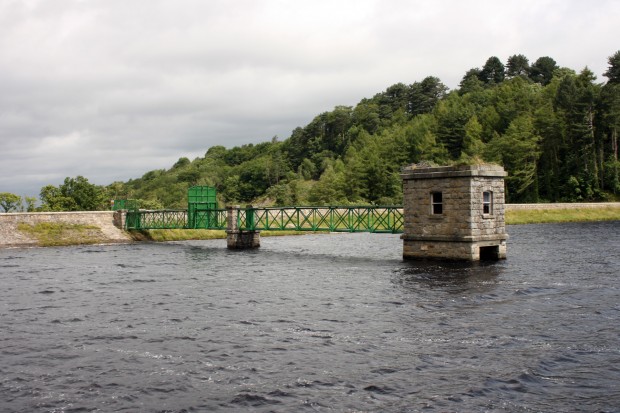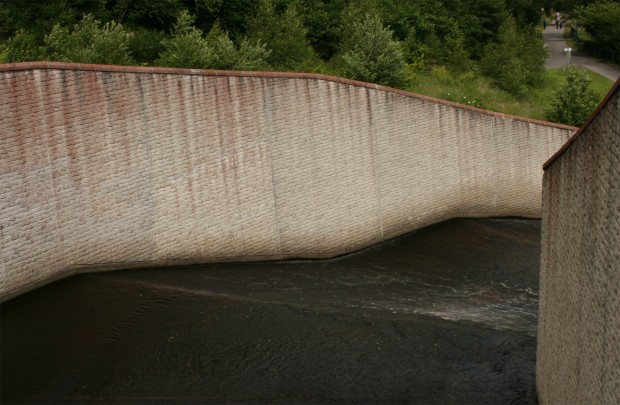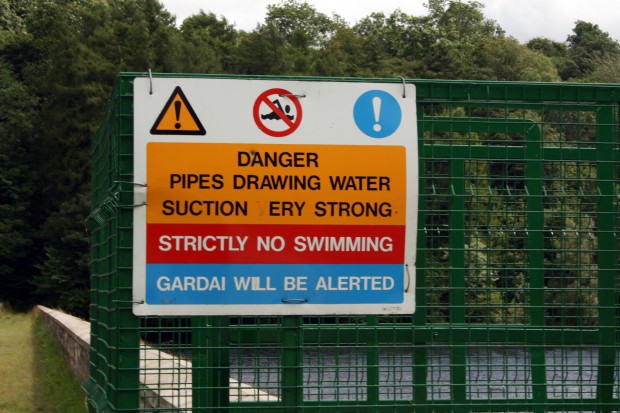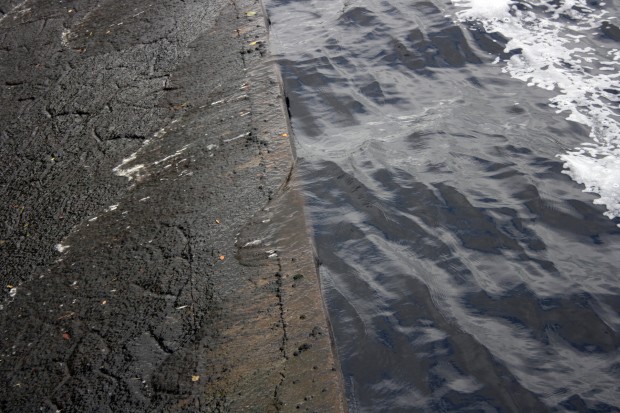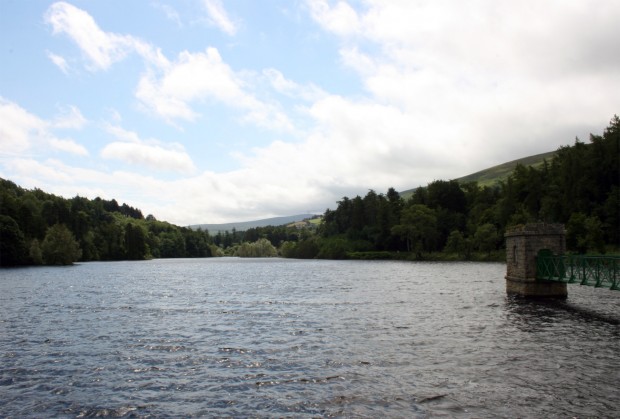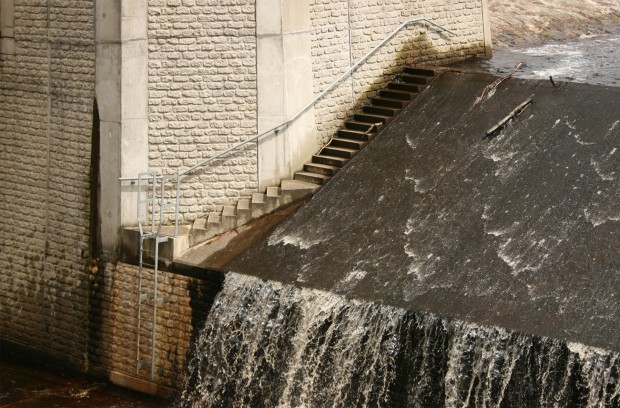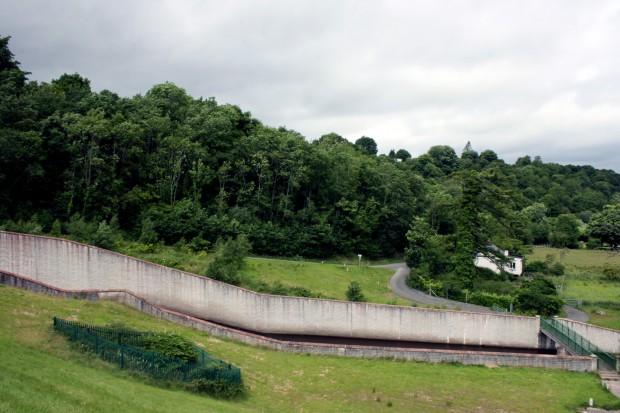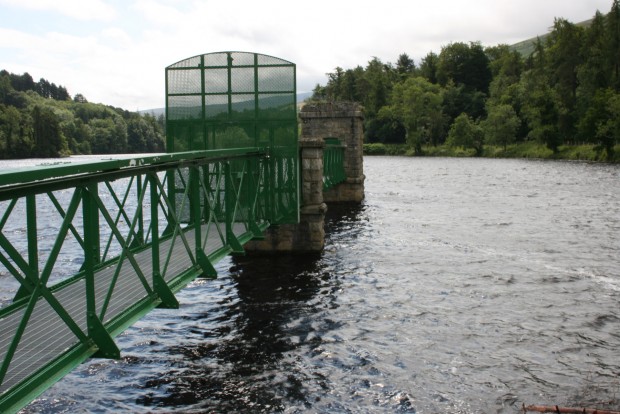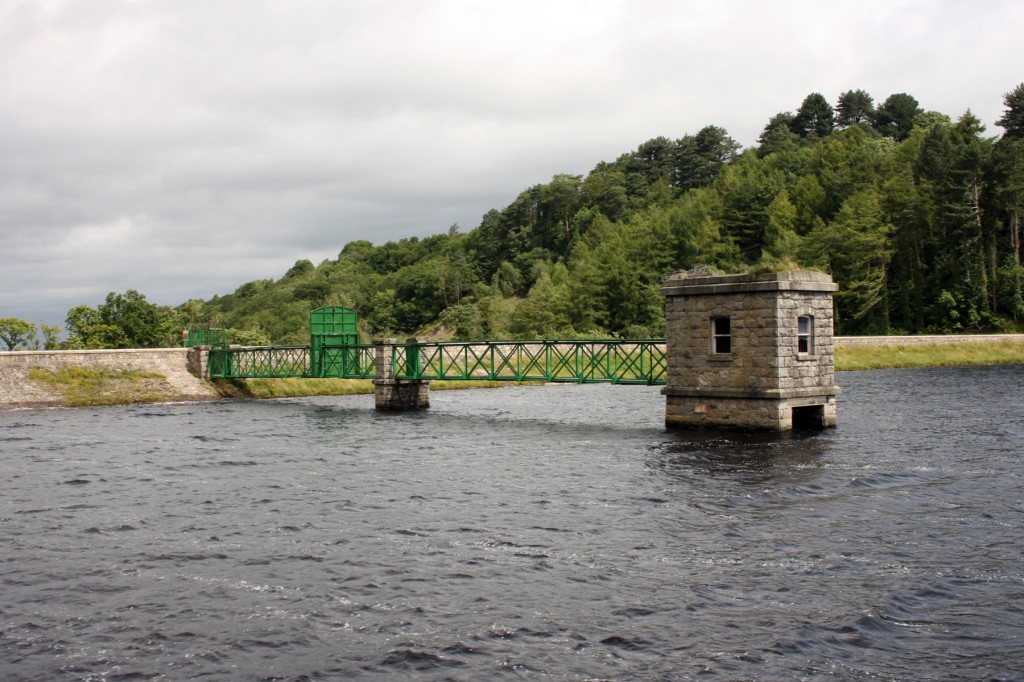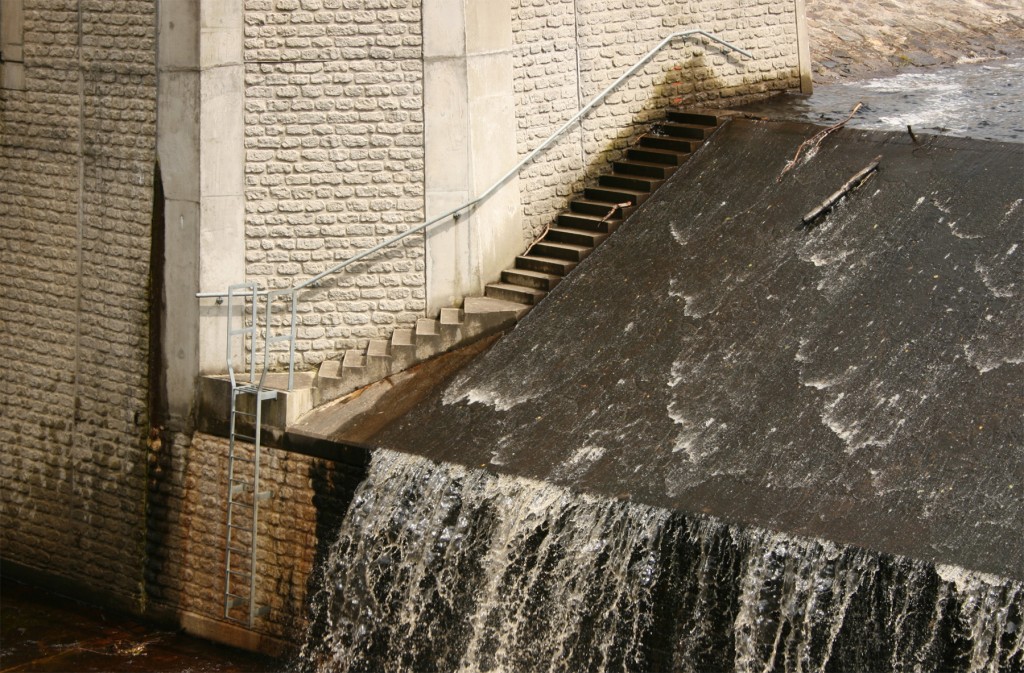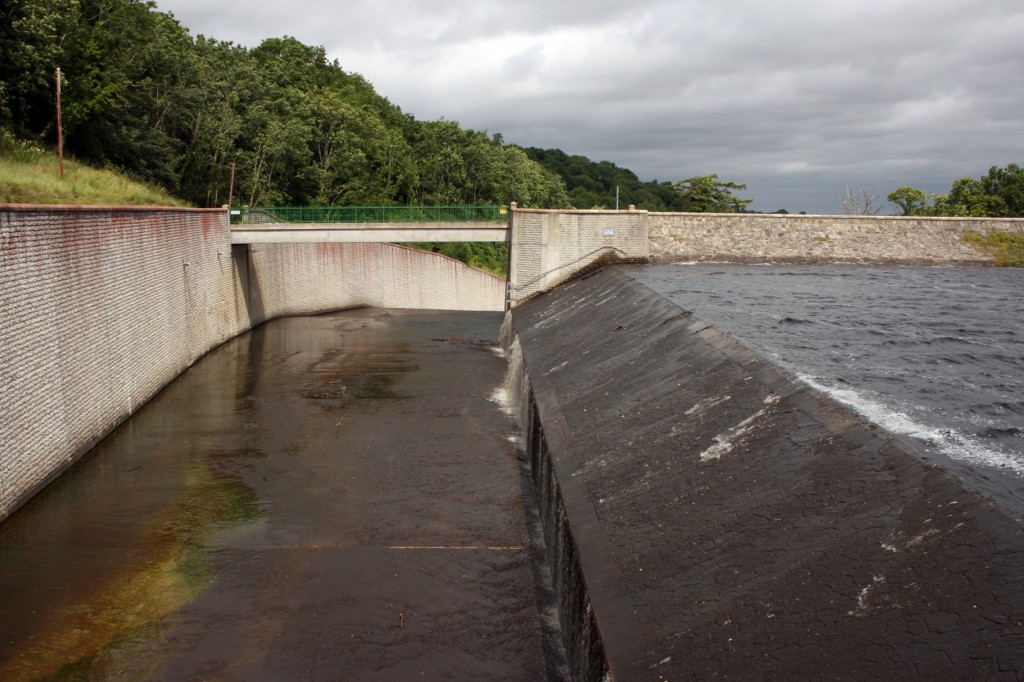The two reservoirs in the Glenasmole Valley were constructed in the 1880s for the Rathmines Commission. The upper reservoir feeds the waterworks at Ballyboden, while the lower one used to supply the mills along the Dodder Valley. The stone used in construction came from the Carraig mountain. (Incidentally, it’s 21 minutes and 12.2km by car to Rathmines, but it feels even further because of the changes in roads and housing density along the way. That’s the route I took to Bohernabreena and it’s very hard to imagine the connection between this big, distant body of water and the taps at home.) There are public walking routes around the reservoir, a nice quiet walk surrounded by many trees and the water.
At the upper edge of the upper reservoir, there’s a neat stone outlet tower linked to shore by a green bridge. The outlet tower in a reservoir sits above the outlet pipe – there’s a nice diagram here – so though the overflow system nearby makes all of the noise and visibly takes out a lot of water, the picturesque tower jutting out of the water marks the location of the real activity.
That’s not to say that the overflow is boring. The edge of the reservoir is met by a large stone embankment dam, dropping the water down into a spillway which snakes away down the slope. Visiting in the middle of July (even such a wet July!), there’s a small enough flow that the textured surface of the dam is clearly visible through the cascade. The concrete stairs down the dam look too small to be real and it’s a sudden reminder of the human scale in all of this. Like a lot of large-scale infrastructure, there’s a real functional elegance to reservoirs, and there’s also fodder for thousands of nightmares about drowning in machinery. It’s hard not to find that exciting.


